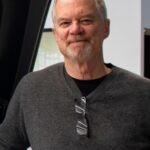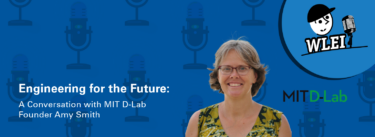The Lean Product and Process Development (LPPD) system comprehensively and uniquely combines the three elements of innovation — people, processes, and tools — to create new products and services in concert with the value streams for delivering them to customers. In contrast, traditional development methods create new products and services in functional silos or rely on a “lone-genius approach,” according to Jim Morgan, an engineering PhD, a former product development executive at Ford, and most recently COO of electric vehicle startup Rivian.
In a presentation to hundreds of engineers at a Fortune 100 manufacturer, Morgan, who now is the senior advisor for product and process development at the nonprofit Lean Enterprise Institute, explained which of the three elements – people, processes, or tools – he believes is paramount and why. (The following excerpt from the talk was edited for length.)
Among the three critical and interdependent elements of new product and service development — people, processes, and tools, I’ve always felt strongly by far that the most important part is people. I’ll always take the right team over any technology. And I agree with Pixar Co-founder Ed Catmull’s quote, “If you give a good idea to a mediocre team, they will screw it up. If you give a mediocre idea to a brilliant team, they will either fix it or throw it away and come up with something better.”
So, what I want to talk about today is this idea of “people first” because Lean Product and Process Development (LPPD) is not a “lone genius” model of product development. LPPD is about engaging everyone in the entire enterprise and building people’s capabilities to create a continuous innovation machine.You have to create an environment where people feel safe to surface “red” issues. But the next part is: What’s your plan to get to green? People must know that it’s okay to be red, but it’s not okay to stay red.
Product development is not an engineering thing; it’s an enterprise thing that requires engagement with people in manufacturing, supply chain, marketing, etc. The whole organization must collaborate in a way that very few other activities require. Engaging everyone in the enterprise is a very unique perspective that LPPD has. It doesn’t view new product and service development in isolation. LPPD thinks about the entire value stream, meaning everyone involved in all the steps required to bring value to the customer.
A lot of organizations talk about people being most important; it’s what they do about it that counts. And it starts with hiring. One bad hire can wreck a team, so it’s important to put a lot of energy and effort into the people that you hire, that you bring into the team. It’s not just about hiring the most talented or people with the best grade point averages, who went to whatever school you happen to favor, it’s about fit. It’s about whether someone is a fit with the organization, the culture, common values, common perspectives, and the purpose of the organization. As Menlo Innovations CEO and Co-founder Rich Sheridan, says, “It’s nearly impossible to figure that out by looking at a resume.”
You need to take time in the way you bring people on board. And then once they’re hired, you have to continue to invest in people. And there’s no organization I know that’s better at that than Toyota. And I think the quote by Mike Massaki, former president of the Toyota Technical Center, is just awesome: “We develop people and product simultaneously.”
So, this idea of developing people is at the core of the way they think about their work. It’s not an extracurricular thing like sending you for college-credit courses. It’s focused on mentoring; on how do you learn from your work assignments? My personal bias is that you can go to school to study engineering, but you learn how to be an engineer at work. And if you really value people, you have to lead like you value people. In this regard, I had a tremendous experience working with Alan Mulally when he was CEO of Ford.
Management by Table-Pounding
I experienced Ford before he got there and after he got there. The difference was dramatic. In fact, I was one of the people who felt that what could just changing a CEO do to a 300,000-person organization? I mean, it’s still just one person. And then I found out. The kind of impact that he had on people’s lives was just incredible. His approach to leadership inspired us to do and be more than we ever thought we could.
You can hear him describe in his own words his approach to leadership and the role of senior leaders in a lean product and process transformation in a podcast I did with him.
I asked him what does “people first” mean because he talked about it all the time. He said it’s code for “I love you as a person and everyone’s included.” That attitude was also a big change at Ford.
His saying of “One Ford” was not just a slogan. There are lots of companies now putting “one” in front of their names to get people to work together across the company. But for us, it was the way we went about doing our work every day. He told his leadership to take fear and intimidation out of their toolboxes because it was no longer a part of the way we were going to work. That was a big change at Ford because table-pounding, fear, and intimidation were big parts of the way people got things done there at the time.
There’s a great story in American Icon: Alan Mulally and the Fight to Save Ford Motor Company about Ford executive team meetings where all the key indicators were always green, yet the company was going out of business. Finally, an executive marked an indicator red, and it was transformative. The lesson is that you have to create an environment that’s safe, where people feel safe to surface red issues. But the next part is: What’s your plan to get to green? So, people must know that it’s okay to be red, but it’s not okay to stay red.
What to Do Next:
- Get access to the latest ideas and how-to advice about using the innovative LPPD methodology to design not only better products and services – but better futures for yourself, customers, and team members. Sign up for the free monthly LPPD newsletter.
- Read Designing the Future. Authors Jim Morgan and Jeff Liker go beyond broad generalizations about innovation to the concepts and concrete examples of companies redesigning product development systems to consistently deliver market-leading new products and services.
Designing the Future
An Introduction to Lean Product and Process Development.






